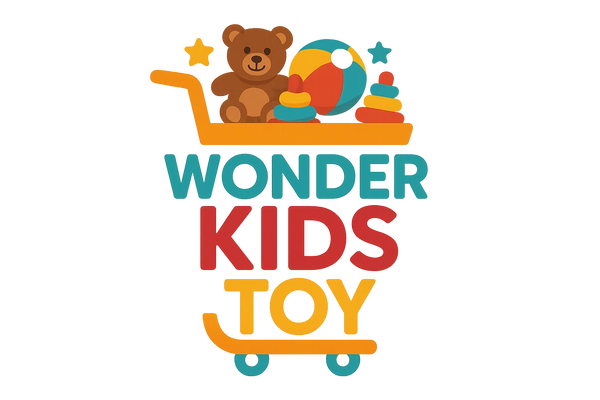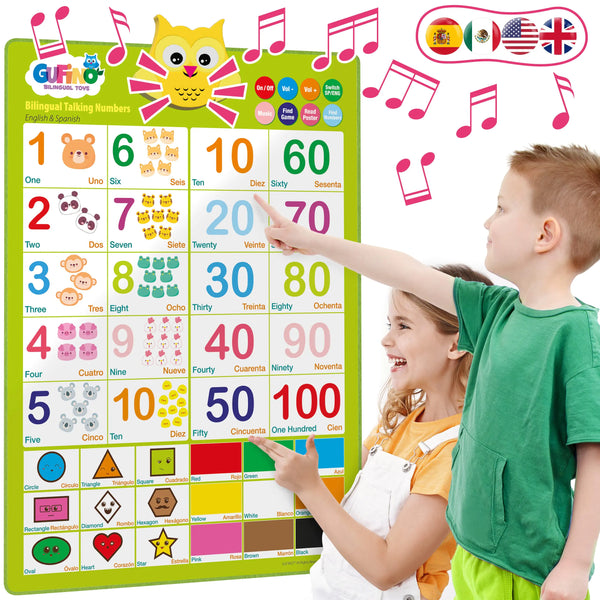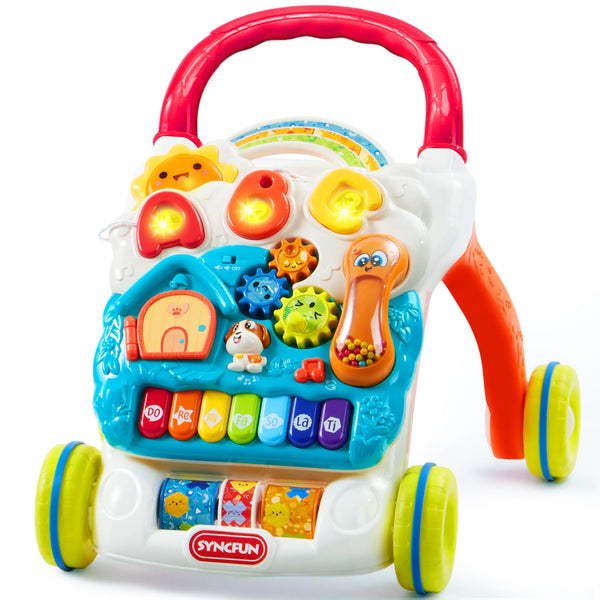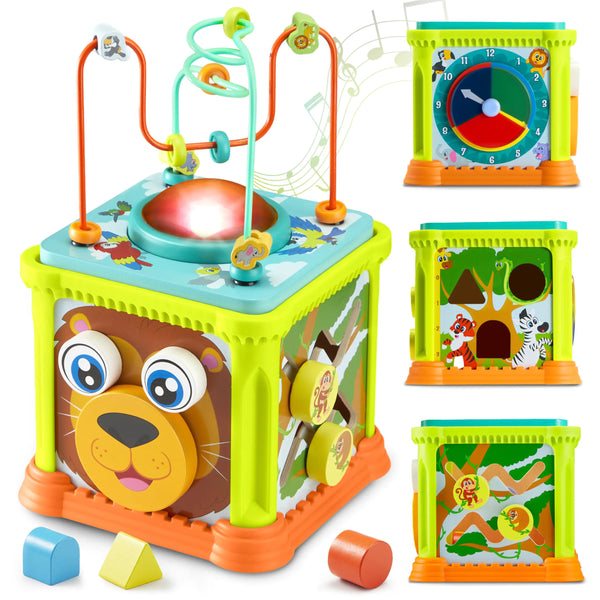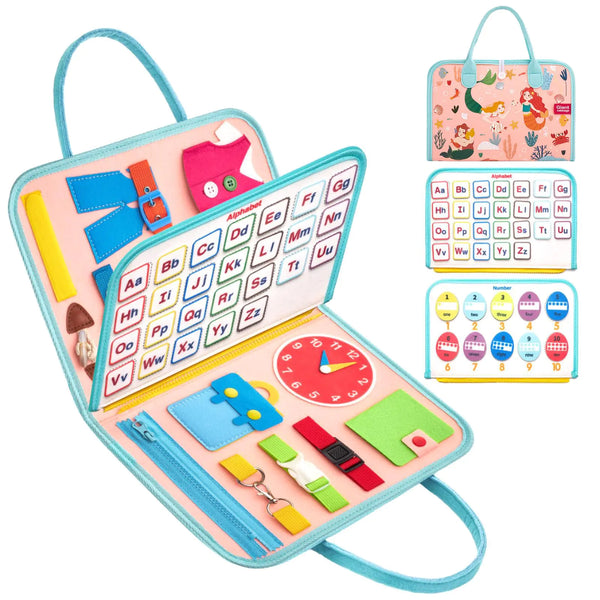Finding the right infant developmental toys can be tough for parents. There are so many choices, it's hard to know what's best for a baby's growth.
Montessori toys for infants are made to help babies reach essential milestones through play. They create a space where learning and discovery are encouraged.

Choosing the right toys can help a baby's brain and motor skills grow. It's about picking toys that are not just fun but also teach something new. They should match the baby's age and preferences.
Key Takeaways
- Montessori toys support infant developmental milestones.
- Choosing the right toys can enhance cognitive development.
- Infant developmental toys should be both fun and educational.
- The Montessori method emphasizes self-directed learning.
- Selecting age-appropriate toys is key to infant development.
Understanding the Montessori Approach for Infants
For parents wanting to help their infants grow, knowing the Montessori philosophy is key. Dr. Maria Montessori created this method. It focuses on learning by doing and at the child's own pace.
Core Principles of Montessori Philosophy
The Montessori way has core ideas that help infants grow. It's about creating a space where they can explore and learn. It also encourages them to be independent and love learning. These ideas help parents support their infant's growth.
| Principle | Application in Infant Development |
|---|---|
| Prepared Environment | Creating a safe space for infants to explore and learn |
| Independence | Encouraging self-directed play and decision-making |
| Love for Learning | Fostering curiosity and a love for discovery |
Why Montessori Matters in the First Year
The first year is when infants grow and learn the most. Montessori helps by making a space for them to explore and learn. It helps them develop essential skills, such as problem-solving and movement.
Infant Development: What to Expect in the First Year
Knowing what to expect in your baby's first year is key to supporting their growth. The first 12 months are filled with rapid changes. You'll see significant steps in motor skills, sensory development, and thinking abilities.
Motor Skills Development Timeline
Motor skills are vital for your baby's growth. They start by lifting their heads while on their stomachs. Then, they roll over, sit up, and eventually crawl.
By 6 months, many babies can sit up with a bit of help. By 9 months, they sit on their own. Crawling typically begins between 7 and 10 months. They then stand with support and walk.
Sensory Development Stages
Sensory development is also essential. Babies are born with a love for their mother's voice. They can distinguish between different tastes and smells.
As they grow, they get better at seeing things. They track moving objects and know familiar faces. By 6 months, they start to play with toys and explore them by touch and mouth.
Cognitive Milestones Month by Month
Cognitive growth happens fast in the first year. By 3 months, babies track objects and understand cause-and-effect.
By 6 months, they know objects exist even when they can't see them. By 9 months, they play simple games like peek-a-boo.
| Age | Motor Skills | Sensory Development | Cognitive Milestones |
|---|---|---|---|
| 0-3 Months | Lifting head while on stomach | Responding to loud noises | Recognizing familiar faces |
| 4-6 Months | Rolling over, sitting with support | Tracking moving objects, distinguishing tastes | Understanding cause-and-effect |
| 7-9 Months | Crawling, sitting unassisted | Exploring toys through touch and mouthing | Understanding object permanence |
| 10-12 Months | Standing with support, potentially walking | Responding to simple commands | Demonstrating an understanding of simple games |
Benefits of Montessori Toys for Infant Brain Development
Simple, well-designed Montessori toys help infants make new neural connections. They create a stimulating space for exploration and discovery. This is key for infant brain development.
The Montessori method focuses on self-directed play. It lets infants learn at their speed. This boosts their cognitive growth.
How Simple Toys Support Neural Connections
Montessori toys are simple yet powerful. They help infants make neural connections through play. For instance, toys that require grasping and releasing improve fine motor skills and hand-eye coordination.
| Toy Type | Developmental Benefit |
|---|---|
| Grasping Toys | Fine Motor Skills, Hand-Eye Coordination |
| Sensory Mats | Sensory Development, Exploration |
| Mobiles | Visual Development, Tracking |
The Role of Self-Directed Play in Learning
Self-directed play is central to the Montessori method. It allows infants to learn at their own pace, fostering independence. Through play with Montessori toys, infants improve problem-solving and newborn learning skills.
Essential Features of Montessori Toys for Babies
It's essential to understand what makes Montessori toys special for your baby's development. These toys help babies learn and grow by themselves. When selecting toys, look for materials, design, and safety that align with Montessori principles.
Natural Materials: Why They Matter
Montessori toys use wood, cotton, and wool. These materials are not only good for the planet but also feel pleasant to touch. Natural materials help babies think and explore. They are also strong and safe, unlike some other materials.
Simplicity vs. Overstimulation
Montessori toys are simple and don't overwhelm. This helps babies focus and learn more. Toys that are too busy can confuse and distract them. Simple toys help your baby's brain grow.
Safety Considerations for Infant Toys
Keeping your baby safe is key when choosing toys. Montessori toys are made with safe materials, smooth edges, and no loose parts. Look for toys with safety stamps like ASTM or EN 71 to be sure they meet safety standards.
| Feature | Montessori Toys | Conventional Toys |
|---|---|---|
| Materials | Natural (wood, cotton) | Often synthetic (plastic) |
| Design | Simple, minimalist | Often complex, electronic |
| Safety | Non-toxic, durable | Variable may contain small parts |
By choosing toys with these key features, you help your baby grow in a safe and supportive way. This follows Montessori's ideas for learning and development.
Your Guide to Montessori Toys for Infants: Developmental Milestones & Play Ideas
Choosing Montessori toys for infants is a careful process. It's about knowing your child's growth stages. As they grow, their needs and skills change. So, picking toys that support these changes is key.
Matching Toys to Developmental Stages
Infants grow at different paces, but they hit common milestones. From birth to three months, they start to explore the world with their senses. Montessori toys for this age focus on sights and sounds, like mobiles and soft music toys.
By 6-9 months, they begin to improve their motor skills and hand-eye coordination. Toys that help with reaching, grasping, and shaking are great, such as rattles and soft blocks.
Creating a Balanced Toy Collection
A good toy collection for infants should have different textures, colors, and sounds. It's also smart to change toys often to keep things interesting. A messy toy area can be too much for babies. So, picking toys that help with various skills is essential.
"The environment is prepared in such a way that the child can carry out activities that foster their development." This quote shows how vital a well-chosen toy collection is in a Montessori setting.
Observing Your Baby's Interests and Readiness
It's essential to watch your baby's interests and when they're ready for new things. By noticing what they find fascinating, you can introduce toys that match their current interests. This makes learning more fun for them.
- Watch for signs of engagement and curiosity.
- Introduce new toys that match their current developmental stage.
- Rotate toys to maintain novelty and interest.
By following these tips, you can make a supportive environment for your infant's growth. This is done with the right Montessori toys and play ideas.
Montessori vs. Conventional Toys: Key Differences
In the world of infant toys, Montessori stands out from traditional toys in many ways. Knowing these differences helps parents choose the best toys for their kids.
Purpose-Driven vs. Entertainment-Focused Design
Montessori toys aim to help kids learn and grow through play. Unlike traditional toys, they prioritize education over entertainment.
This design choice changes how kids play. Montessori toys let kids explore and learn at their speed.
Quality and Longevity Considerations
Montessori toys are made from high-quality, natural materials. This makes them last longer and feel better in kids' hands. Many traditional toys, made from plastic, can't compare.
| Feature | Montessori Toys | Conventional Toys |
|---|---|---|
| Material | Natural (wood, fabric) | Often plastic |
| Design Focus | Educational, developmental | Entertainment-focused |
| Longevity | Durable, long-lasting | Variable, often disposable |
Impact on Attention Span and Independent Play
Montessori toys help kids play alone for longer. They keep kids focused on the toys. Traditional toys, with their bright lights and sounds, can distract kids.
Choosing Montessori toys helps create a better play space. It supports kids' learning and growth.
Best Montessori Toys for Newborns (0-3 Months)
Montessori toys for newborns are simple yet effective. They help with visual, sensory, and motor skill development. In the first three months, babies explore the world, and the right toys support this journey.
Mobiles and Visual Stimulation Tools
Newborns love movement and contrast. Mobiles with simple, high-contrast designs are perfect for visual stimulation. They help babies focus and track, preparing them for future learning.
First Grasping Toys
As newborns grow, they start to use their hands. Simple rattles or soft toys are great for motor skill development. These toys should be light and safe for the baby to mouth.
Sensory Development Materials
Sensory development is key in the first few months. Materials with different textures, like soft fabrics or gentle brushes, stimulate touch. It's essential to introduce these in a calm setting.
Top 5 Recommended Toys for This Stage
- A simple, high-contrast mobile for visual stimulation
- Soft, lightweight rattles for auditory development and grasping
- Textured balls or toys for sensory exploration
- A soft, fabric book with different textures for sensory development
- A gentle, musical toy that responds to the baby's movements
"The environment is prepared in such a way that the child has the opportunity to develop his/her mental and physical abilities."
Top Montessori Toys for 3-6 Month Olds
For babies aged 3-6 months, Montessori toys are perfect. They help with reaching, grasping, and understanding cause and effect. These toys support sensory experiences and motor skills.
Reaching and Grasping Toys
Toys that help with reaching and grasping are key. Rattles and soft toys with different textures grab a baby's attention. They encourage babies to move their arms and hands, improving hand-eye coordination and muscle strength.
Introduction to Cause and Effect
Understanding cause and effect is a big step for babies. Montessori toys, like rattles or simple musical instruments, teach this. When a baby shakes a rattle, they learn their action makes a sound. This is the start of solving problems.
Early Exploration Tools
Tools for early exploration, like mirrors and reflection toys, help babies learn about their world. These tools aid in self-discovery and visual growth. A baby's interest in their reflection boosts their thinking skills.
Top 5 Recommended Toys for This Stage
- Soft Rattles: Easy to grasp and safe for babies to put in their mouths.
- Textured Balls: Provide a variety of sensations for the baby's senses.
- Simple Mobiles: Encourage visual tracking and understanding of object permanence.
- Musical Toys: Introduce cause and effect through sound.
- Mirror or Reflection Toys: Foster self-discovery and visual development.

Montessori Toy Recommendations for 6-9 Month Olds
Between 6 and 9 months, babies grow and become more curious. They start to move around and explore their world. It's important to pick toys that help them learn naturally.
Sitting and Movement Support Toys
Toys that help with sitting and moving are key. They strengthen the baby's back and neck muscles. This allows them to sit up straight and eventually crawl and stand.
Examples include pillows or cushions for support and toys that encourage reaching and stretching.
Object Permanence Boxes
Object permanence boxes teach babies that things keep existing even when they can't see them. This idea is vital for their brain growth. It helps them understand cause and effect and solve problems.
Mouthing and Teething Materials
Mouthing and teething are significant aspects of a baby's development at this stage. Giving them safe, natural things to chew on helps. Wooden teethers or soft, organic fabrics are good choices. They ease teething pain and help their mouth grow strong.
Top 5 Recommended Toys for This Stage
- Object Permanence Box
- Stacking Cups or Blocks
- Soft, Textured Balls
- Teething Toys Made from Natural Materials
- Push-Pull Toys for Encouraging Movement
Best Montessori Toys for 9-12 Month Olds
The time from 9 to 12 months is key for babies. The right Montessori toys can really help their growth. At this age, they start to move around, improve their hand skills, and learn to solve problems.
Pulling Up and Standing Supports
When babies start pulling up and standing, they need help and support. Montessori toys that help with this include:
- Sturdy activity centers with bars to hold onto
- Soft blocks for stacking and balance
- Low, stable furniture that allows them to pull up safely
Fine Motor Skill Developers
Activities that improve hand-eye coordination and dexterity are great for fine motor skills. Recommended toys are:
- Stacking cups or rings
- Soft puzzles with large pieces
- Playdough with simple tools for manipulation
Early Problem-Solving Toys
Problem-solving toys help babies think critically. Examples include:
- Object permanence boxes
- Simple shape sorters
- Nesting toys that require fitting pieces together
Top 5 Recommended Toys for This Stage
Here are some top picks for Montessori toys for 9-12-month-olds:
- Grimm's Wooden Stacking Blocks: Great for fine motor skills and stacking
- Melissa & Doug Shape Sorting Cube: Boosts problem-solving skills
- PlanToys Sensory Bottle: Encourages sensory exploration
- Manhattan Toy Winkel Stacking Rattles: Improves hand-eye coordination
- Wooden Object Permanence Box: Teaches object permanence
Setting Up a Montessori Play Space for Infants
Creating a Montessori play space for infants is a thoughtful process. It requires attention to detail and understanding your baby's needs. A well-designed play area helps your infant explore, learn, and become independent.
Floor Bed and Movement Area Design
A key element is the floor bed, which lets infants move freely. It helps them get in and out of bed on their own. Use a low mattress or a floor bed in a quiet area. Make sure the area is safe and soft for your baby to land on if they fall.
Toy Rotation Systems
Using a toy rotation system is key to keeping your infant interested. Rotating toys prevents overstimulation and keeps play fresh. Start with a few toys that match your infant's developmental stage. Then, change them every few days to introduce new things.
Creating Accessible Toy Shelves
To promote independence, make toys easy to reach. Use low shelves or baskets for your baby to pick and return toys. This helps your infant feel in control and develops their fine motor skills.
Designing your Montessori play space thoughtfully supports your infant's curiosity and love for learning. It's a nurturing space that encourages exploration and independence. This sets the stage for a lifelong love of learning.
DIY Montessori Toys You Can Make at Home
Making your own Montessori toys at home is a great way to help your baby grow. You can make toys that fit your baby's needs and interests. This way, you can give them fun and learning activities.
Simple Sensory Bottles
One easy DIY toy is a sensory bottle. Just fill a plastic bottle with water, oil, or sand. Add some food coloring, glitter, or small toys for fun. It's a calming and fun way for your baby to see colors and shapes.
Homemade Mobiles
Building a homemade mobile is a fun DIY project. Use cardstock, felt, or natural fibers to make shapes and designs. Hang it above your baby's crib or play area. It helps their eyes get used to different sights.

Natural Material Discovery Baskets
Natural material baskets are perfect for sensory play. Put pinecones, leaves, or shells in a basket. Let your baby explore and touch different textures and objects.
- Use natural materials for a rich sensory experience.
- Change the materials often to keep the play exciting.
- Watch your baby to make sure they're safe.
By making your own Montessori toys, you create a fun and learning space for your baby. It helps them grow and learn safely and engagingly.
Incorporating Montessori Principles in Everyday Activities
Montessori isn't just about toys; it's a way of living and interacting with your child. It can be applied to everyday activities. By adopting Montessori principles in daily routines, parents can foster a nurturing environment. This environment encourages learning and development.
Montessori Approaches to Feeding and Mealtime
Mealtime is a great chance to apply Montessori principles. Using a child-sized table and chair, or even just a mat on the floor, encourages independence. Allowing your infant to feed themselves (even if it's just finger foods at first) promotes self-feeding skills and fine motor development.
Bath Time as a Learning Opportunity
Bath time can be more than just a hygiene routine; it can be a sensory experience. Using natural bath products and allowing your child to explore water and soap can enhance their sensory development. Providing cups or other bath toys for pouring and scooping can also aid in fine motor skills.
Dressing and Diapering with Montessori in Mind
During dressing and diapering, giving your child choices (like which shirt to wear) and involving them in the process (like handing you a diaper) can encourage independence. Making these activities a dialogue, explaining what you're doing, also promotes language development.
| Activity | Montessori Application | Learning Outcome |
|---|---|---|
| Feeding | Self-feeding, child-sized utensils | Independence, fine motor skills |
| Bath Time | Sensory exploration, pouring activities | Sensory development, fine motor skills |
| Dressing/Diapering | Giving choices, involving the child in the process | Independence, language development |
Common Mistakes When Choosing Infant Montessori Toys
Choosing the right Montessori toys for your infant is key. Knowing common mistakes can be helpful. The Montessori method focuses on self-learning and hands-on activities. But some mistakes can get in the way.
Choosing the right toys for infants is a big deal. Avoiding electronic and overstimulating toys is important. These can overwhelm a child and make it hard for them to focus.
Avoiding Electronic and Overstimulating Toys
Electronic toys can be too much for infants. They make noise, light up, and move on their own. Instead, choose simple, non-electronic toys that encourage interaction and exploration. For example, a wooden rattle or a soft fabric book is better.
The Problem with Too Many Choices
Having too many toys at once can confuse infants. Limiting the number of toys available helps keep their interest. It also encourages them to explore each toy more deeply.
| Toy Type | Benefits | Potential Drawbacks |
|---|---|---|
| Electronic Toys | May entertain with lights and sounds | Can be overstimulating, promotes passive engagement |
| Simple, Non-Electronic Toys | Encourages interaction, exploration, and learning | May not be as immediately engaging |
Age-Inappropriate Materials
Choosing toys that are not right for your infant's age can be a mistake. Make sure the toys match your child's developmental stage. For example, toys with small parts are not good for infants who are learning to explore their world.
By avoiding these common mistakes, parents can create a better Montessori environment for their infants. Dr. Maria Montessori said, "The greatest sign of success for a teacher is to be able to say, 'The children are now working as if I did not exist.'"
"The environment must be rich in motives which lend interest to activity and invite the child to conduct his own experiences."
Where to Shop for Quality Montessori Infant Toys
As a parent, you might wonder where to find top-notch Montessori toys for your infant. The good news is that many trusted sources offer a wide range of Montessori-approved toys.
Trusted Online Retailers
For online Montessori toy shopping, choose retailers specializing in educational and child development products. Some top online retailers include:
- Amazon: Known for its vast selection and customer reviews.
- Monti Kids: Specializes in Montessori materials for infants and toddlers.
- Common Sense Kids: Offers a curated selection of educational toys.
When shopping online, always read product descriptions and check customer reviews. This ensures you get a quality product.
What to Look for in Product Descriptions
A great product description should detail materials, educational value, and safety features. Look for descriptions that show the toy's Montessori alignment. This includes promoting independent play and supporting developmental milestones.
Price Considerations and Investment Value
Montessori toys are often pricier due to their high-quality, natural materials. Yet, they're built to last, making them a wise investment in your child's growth. When looking at prices, think about the toy's durability and its ability to support your child's development over time.
By shopping from trusted retailers and paying attention to product details and prices, you can find the best Montessori toys. These toys will support your infant's growth and development in a meaningful way.
Montessori toys for infants are key in early childhood growth. Understanding the Montessori method enables parents to select the most suitable toys for their child.
Choosing the right Montessori toys and setting up a good play area is essential. It helps an infant grow in many ways. As parents, we can help our child start strong by creating a space for them to learn and play on their own.
By incorporating Montessori ideas into our daily lives and selecting high-quality toys, we support our child's growth. This helps them develop a love for learning from a young age. It's important to keep watching our child and change our approach as they grow.
FAQ
What are the benefits of Montessori toys for infant brain development?
Montessori toys help infants learn by themselves. They build connections in the brain, making learning fun. This is thanks to their simple, practical designs.
How do I choose the right Montessori toys for my infant's developmental stage?
Pick toys that fit your baby's age and interests. For example, newborns need mobiles, while 6-9-month-olds enjoy object permanence boxes.
What are the essential features of Montessori toys for babies?
Montessori toys use natural materials and simple designs. They are safe, making them perfect for babies.
Can I make my own Montessori toys at home?
Yes, making your own Montessori toys at home is fun. You can make sensory bottles, homemade mobiles, and discovery baskets from natural materials.
How can I incorporate Montessori principles into everyday activities like feeding and bathing?
Make mealtime fun and use bath time to teach. Dress and diaper your baby in a way that encourages independence and exploration.
What are some common mistakes to avoid when choosing infant Montessori toys?
Avoid electronic and too-stimulating toys. Don't give too many choices or pick materials that are too old for your baby. These can slow down development.
Where can I shop for quality Montessori infant toys online?
Shop online at trusted retailers for Montessori toys. Look for toys made from natural materials that are simple and safe. Consider the price and value.

